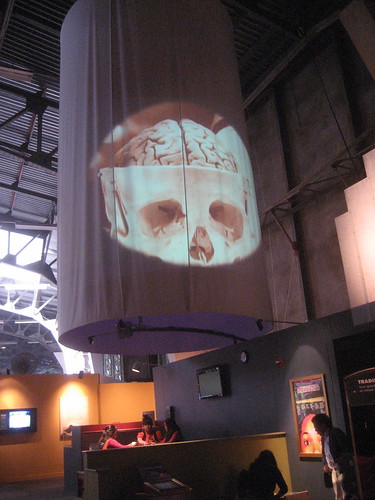In The Distraction Addiction I made the argument that our cognitive abilities and facility for using technology— in particular, our possibly unique ability for becoming mentally absorbed in technology-focused tasks— is not new.
In fact, I argue, it’s very old; it defines what it means to be human; the struggle to make and master technologies has sharpened our cognitive abilities; and it’s a capacity that we should embrace and extend, not avoid.
After writing that chapter, I tend to take notice of news about research in physical anthropology and human evolution, like this interesting new study that may help explain when Alzheimer’s appeared in humans, and why.
According to a team led by researchers at the Shanghai Institutes for Biological Sciences, it coevolved with increasing human intelligence.
50,000 to 200,000 years ago, natural selection drove changes in six genes involved in brain development. This may have helped to increase the connectivity of neurons, making modern humans smarter as they evolved from their hominin ancestors. But that new intellectual capacity was not without cost: the same genes are implicated in Alzheimer’s disease.
Kun Tang, a population geneticist at the Shanghai Institutes for Biological Sciences in China who led the research, speculates that the memory disorder developed as ageing brains struggled with new metabolic demands imposed by increasing intelligence. Humans are the only species known to develop Alzheimer’s; the disease is absent even in closely related primate species such as chimpanzees.
As the article abstract explains, the study
developed a new coalescent-based method that collectively assigned human genome regions to modes of neutrality or to positive, negative, or balancing selection. Most importantly, the selection times were estimated for all positive selection signals, which ranged over the last half million years, penetrating the emergence of anatomically modern human (AMH). These selection time estimates were further supported by analyses of the genome sequences from three ancient AMHs and the Neanderthals. A series of brain function-related genes were found to carry signals of ancient selective sweeps, which may have defined the evolution of cognitive abilities either before Neanderthal divergence or during the emergence of AMH. Particularly, signals of brain evolution in AMH are strongly related to Alzheimer’s disease pathways.

